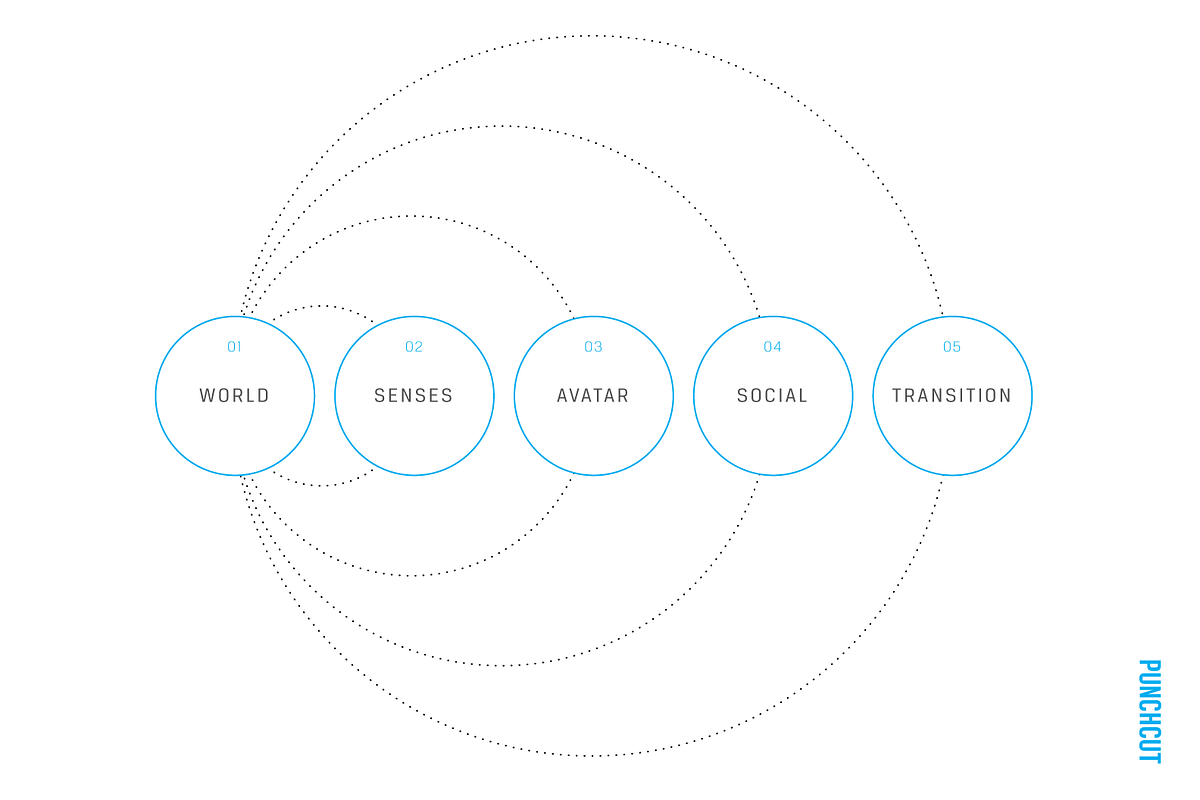
Enrich with the Right Senses
A virtual reality designer is a director orchestrating the senses. When a user has the freedom to look in any direction within a large world with seemingly limitless options, being able to focus the user’s attention towards the next objective or narrative moment is key. Providing this focus imbues the user with a sense of purpose (to explore, to act, to witness, etc), which leads to greater immersion and a more seamless experience.
One challenge with design for virtual reality today is the variety of input options that must be considered when creating a virtual experience. Some hardware solutions rely on sight alone, others allow for hand movement or game controllers, and others take advantage of a free range of motion. Virtual experience designers must consider a “responsive” solution to gracefully downgrade for user’s available sensory inputs and outputs.
In designing responsive experiences, the goal should be to keep a users look movement free and not rely on head movement to navigate or select. If all you have at your disposal is sight and sound, consider voice as a “killer app” for virtual experiences. For varying hardware configurations, the pairing of sight, audio and voice as a minimal requirement would still make for a very compelling experience.
When we think about touch, we need to broaden our thinking to account for in-game tactility, feedback from game controllers, and the incidental feel of the floor under our feet. Haptic feedback serves to orient the user, alerting them of changes in the environment. In addition, consider thermoception (temperature) or mechanoreception (vibration). Game experiences like The Void in Lindon, Utah give users a powerful sense of immersion as they sense sources of heat as they pass, or the vibration under foot as they activate lifts from one level to another. Paired with in-experience visuals, the smell of something burning in the air may lead participants forward if such were a relevant clue in the narrative.
That said, virtual experiences also need to account for senses we don’t often think about. Consider vestibular senses (balance) and proprioceptive senses (the orientation of body position and movement of limbs). When experiences fail to consider these, the user experience greatly suffers.
As a best practice, orient the experience to the user when beginning a VR experience. They should never put on the headset and realize they’re looking at the wrong field of view and have to move their chair/body position to make the experience “work.” Physical comfort is key. For seated experiences, placement of story points and objectives should be within a comfortable angle to a user’s field of view. This also becomes a useful tool in creating meaningful moments pushing a user to look behind them or to feel lost in a space.
With all of these options available to VR designers as methods for directing users through their experience, the art is really in the combination and composition (even exclusion) of these senses to seamlessly move the user through the experience and evoke the desired response.
from uxdesign.cc – User Experience Design — Medium https://uxdesign.cc/design-insights-for-virtual-reality-ux-7ae41a0c5a1a?source=rss—-138adf9c44c—4
